(3180 words)
Note: in the interest of the article’s length, market factors will be touched upon but not gone into great detail. The onus is placed on the reader to have a basic awareness of the economic environment in which they reside.
Like every other sector in 2025 that is suffering from its own unique set of challenges, the watch industry, on every level of complexity with regards to size and scope, has to also deal with the uncertain landscape that 2025 has set forward for the foreseeable half-decade. The half-decade being the term in which the current US administration and its policies will be in effect at the very least. Not addressing the root challenges in the industry leaves it vulnerable to the newly hostile landscape, which every sector and region finds itself in.
The challenges which the industry faces are: stagnation in design at the level which is attainable by the middle class in the western world, the lack of sustainability of a saturated market during a market downturn, a rampant tendency of stealing the work of others, a lack of transparency about the location of where the watches are made, a failure upon providing meaningful products to a consumer when their resources are under the greatest strain experienced in generations. All, thus, resulting in leaving the industry, as a whole, vulnerable to damage that it may not be able to repair.

The Omega Planet Ocean – 20 years ago, it was arguably the brand’s last truly new model line in their men’s lineup.
The Landscape
First, since most people do not follow the news, we will have to address the current environment, how that impacts the brands making the watches that consumers in the middle class are in the market for – see the note above. At the time of writing this article, November 21st 2025, the threats to the global economy are: a private credit lending market bubble, an AI bubble where the vast majority of companies which received and continue to receive heavy investment, in will be erased, an energy bubble with regards to generating power for the data centres for AI infrastructure, a collapse of internet ad revenue generated sites and services. There is also the pressure of uncertainty with regard to tariff policies from the United States on its allies and rivals. Then there are the sizeable wars in Ukraine, the conflicts in Sudan and Mali potentially spreading past the Sahel and into the greater African continent, a risk of the Israeli/Palestinian war restarting, and the general stratospheric rise in the cost of living. These are just naming a few.
One typically safeguards their business from such market threats by first ensuring that their product and how it is brought to market is as secure as possible. This, too, for most is under strain due to their overreliance on Chinese manufacturing. We can look to how Chinese subsidized companies have created issues in other manufacturing centres, such as Germany, and apply those lessons to all of the watch brands abroad which rely on Chinese manufacturing. First, when it comes to subsidized EVs manufactured in China, they were first overwhelming and saturating the European market during the pandemic, where tens of thousands of vehicles were simply being parked in shipping yards across the EU. This prompted the much-needed protectionist laws put in place by many countries in the West when it came to Chinese EVs. Currently, the level of EV output in China is so large that new vehicles are struggling to sell at an extreme discount and are often tagged as used cars. This presents a larger problem for those outside of China in all manufacturing sectors, but not for China itself, for the balance of employment numbers staving off a languishing property sector greatly benefits and outweighs its cons for the People’s Republic, for now. In an economy strongly reliant on a manufacturing sector such as Germany, in areas which had not been protected by the same protectionist laws, such as solar power, farming and manufacturing equipment, companies are left with no choice but to purchase the discounted products from China. This neglect of their own manufacturing has left every industry in Germany vulnerable.
The lesson here, especially for smaller brands in the watch industry in the West which heavily rely upon Chinese manufacturing, is that their well-being is not being looked after when they are one of thousands of brands offering essentially the same product that is manufactured in China. The long-term ramifications of flooding a sector with similar products have a way of catching up with an industry and the economy. This was best witnessed at the Toronto Timepiece Show, where there were dozens of new and small brands with similar offerings in terms of quality and specifications, with barely any of them standing out as to offering anything unique. Everything from dial materials, such as meteorite and other stone dials, and levels of case refinement all spoke to coming from the same few manufacturers. There has been one positive trend recently. There has been a rise in watch designs which are not outright copying the industry’s greatest hits. The side-effect, due to not hiring designers, is that the majority of the products either look unrefined, unfinished, or unremarkable.
Then there are the collateral consequences of recent tariff policies and protectionist stances being taken up by more governments. This means that margins for the manufacturers and the brands are disappearing. A couple of brand owners which I have spoken to who have wished to remain anonymous told me that they have had to cancel entire model line ups because of their over-reliance on Chinese manufacturing due to the tariffs. They all expressed great uncertainty about their company’s future and are not sure whether the brand, which they started out of a labour of love, will still exist in two to five years. Another brand owner who is now considered amongst the incumbents in the industry told me that making a good living just selling watches that are manufactured elsewhere is incredibly hard. They since proceeded to expand their operations and open new lines of business as a result. The reality that most of these brands are not fully being supported by their owners since they have day jobs elsewhere is equally troubling when it comes to the long-term serviceability of the product a customer is purchasing. Keep in mind, simply because a watch is using a standard off the shelf movement doesn’t make it more serviceable, for the crown, crown stems, gaskets, bezels, bezel mechanisms, and simple parts such as hands all will need to be replaced eventually.
The easy answer would be to look elsewhere, but easy answers do not exist in such complex arenas. Firstly, most of the young brands in existence have their watches designed by firms attached to the manufacturers that they are hiring. Even though the customer receives a marketing brief about a design process and various sources of inspiration, most of these smaller microbrands are approaching the project with a concept only. There is a discernible difference between the product made by a microbrand which has a watch designer or watchmaker at the helm and those made by laypeople. Second, the costs of manufacturing in Japan or Switzerland are higher, but not necessarily better in terms of quality and turnaround times – this being the similar issue present above with the German manufacturing industry, where it has become nearly impossible to compete with the Chinese offerings in terms of pace, predictability, and price.
The issue of design also brings us to the fact that a lot of these new brands are simply stealing designs from industry incumbents. This is where there are elements used by known watch brands that are blended together with the hopes of making something that would sell. This year, most of the watches I was offered to review had to be turned down simply because of their designs simply stealing from bigger brands. From a writer’s standpoint, not only is there nothing to write about when it comes to a product that stole its design and calls it “inspired,” but it is also morally wrong to even tangentially promote such a product.
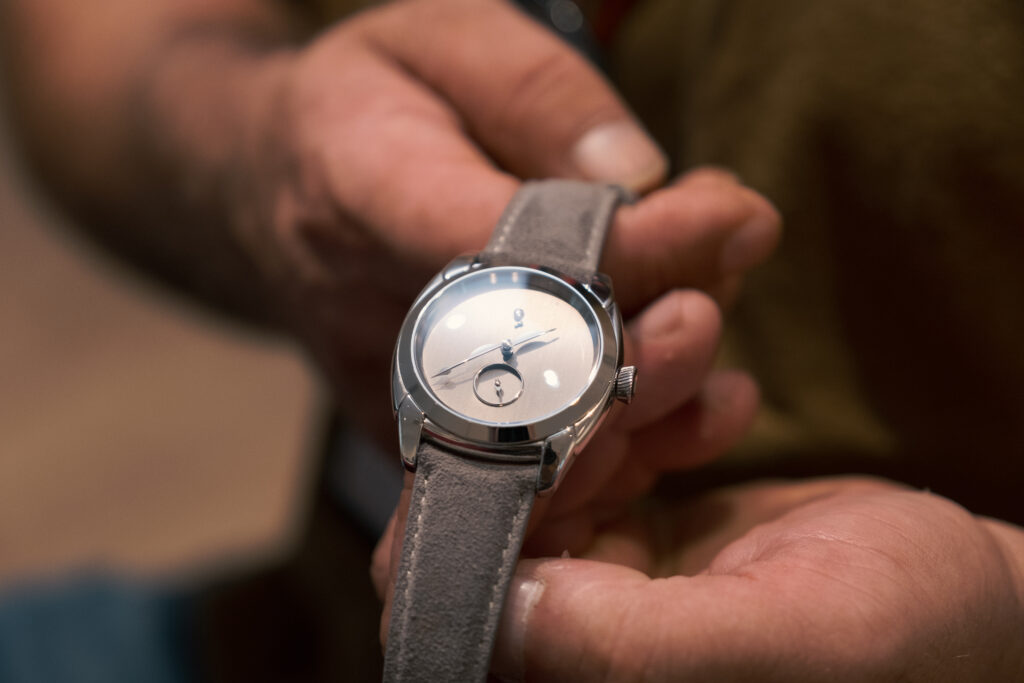
Isotope being one of the small brands who palce an emphasis on new designs.
This problem is not entirely unique to the watch industry. In fashion, new brands are copying tested designs from decades prior, and in the automotive industry, it has become a running joke that South Korean companies are incapable of coming up with an original design. In all sectors, when the fields have already been enriched with monumental design languages harking back to the industrial revolution, it is incredibly difficult to invent something new. This is even harder when considering that the finite elements which make up the product in question have been clearly defined and refined for decades already. Watches have a case, bracelet or strap, dial, and hands. Cars are generally in the three-box shape, and due to safety and emissions regulations, even their dimensions are all within an inch of each other, and identical drivetrain configurations. A men’s jacket, especially one derived from workwear, only has a few tried, tested and true set of standards to draw upon.
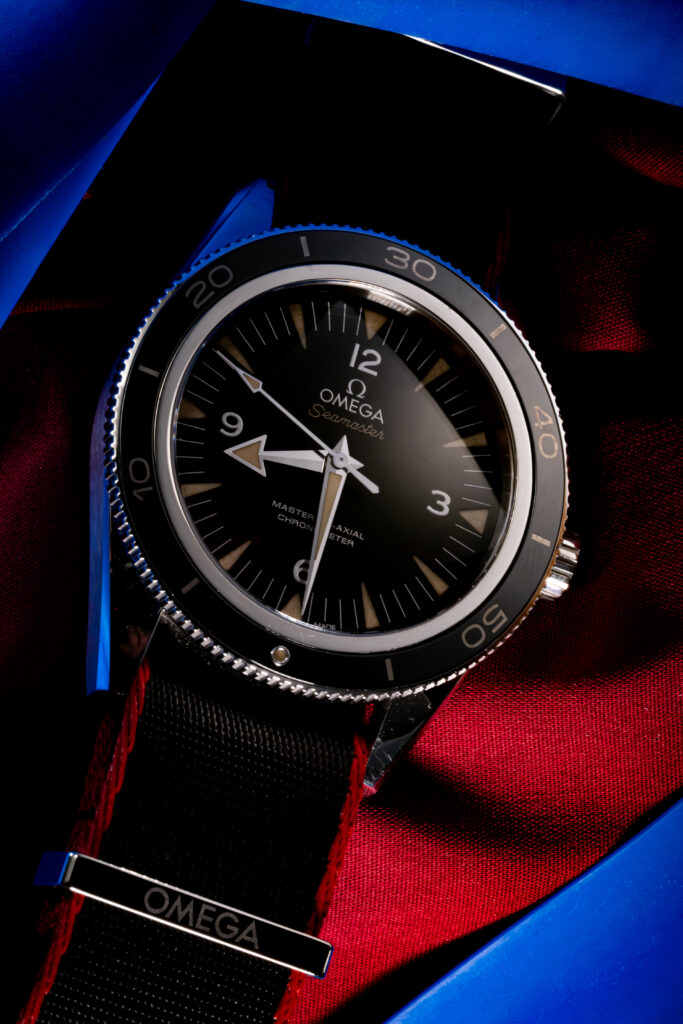
Released in 2014, the Seamaster 300 by Omega was one of the incumbents to fully embrace the retro-revival, which saw great success.
The Swiss and eventually Japanese watch industry found its groove in the years following the 2008 financial crisis with a revival of designs from their back catalogues. Jaeger LeCoutre, Omega, Tudor and others started using luminous paint material on the dials and hands of their watches, which resembled aged vintage watches. Consumers fell in love with having something with a solid heritage behind it, modern manufacturing, and a warranty. Today, most micro-brands are copying the same vintage designs that the incumbent brands are calling upon for their modern offerings. As stated before, most are using the same manufacturers, creating a market that is saturated with similar products coming in at the perceived tolerable price point of being just under a thousand dollars in American currency. One could call this vast ocean of choice a new golden era for the industry, or one of manufactured and unsustainable abundance, like we have discussed earlier with Chinese EVs. As time marches on, and sales numbers from all brands plummet, all indicators are pointing towards the current landscape of choice amounting to nothing more than a very shiny landfill in the future.
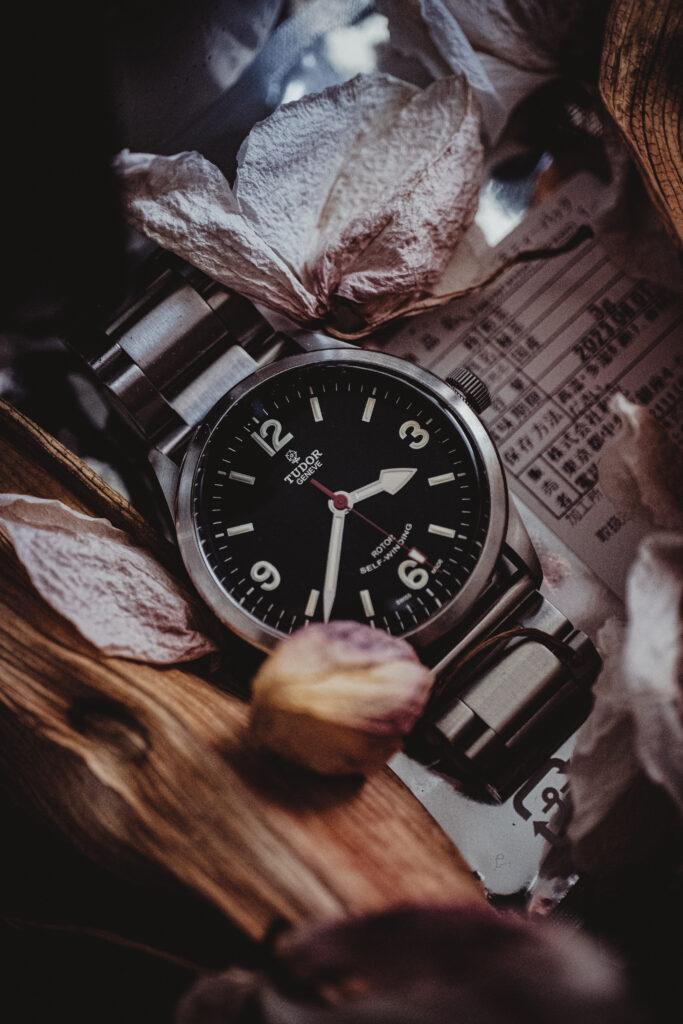
The vintage inspired re-issue of the Tudor Ranger.
Before moving on, we should address the general malaise occurring in all luxury spaces globally. The market segment of around a thousand American dollars just enters into what is deemed as the starting point for luxury goods. From 2022 to 2024, over fifty million customers left the luxury space, citing a lack of trust and being degraded and insulted. This came as luxury brands manufactured scarcity to garner a sense of quality and craftsmanship, to then having it revealed that they had their products made in sweatshops. Customers also cited “greedification” as a major reason why they started to despise luxury goods, for there was no innovation happening with any of the products. These problems exist for the watch industry in the entry-level and mass market luxury segments. In the entry level, all marketing language used by brands focuses on where the watch was assembled and conveniently avoids where the parts are made. In mass market luxury goods where the price of a watch enters the five figures, the brands focus on their timepieces being made in the country of the brand’s origin, while they leave out that a fair number of the parts, such as dials, bezels and cases, were made in China. This information is held closely and in a hostile manner by the brands and the manufacturers. Every eyewitness account of this that I had heard in the past was also accompanied by fear of coming forward. Lastly, entry-level brands just outright lie in their language on their site. A few weeks ago, a friend of mine sent me a message about a Canadian brand selling watches with solar-powered movements. On their website and their social media, they made a very big deal about one day making every part of the watch, including the movements in Canada as their goal. My friend was impressed with this, and this sickened me. It would take hundreds of millions of dollars to even begin such an undertaking. After my friend and I went over their offerings and what they were trying to pass off as reality, her view on the entire industry shifted until I had to point out some alternatives, which were not founded and run by genuinely dishonest people.
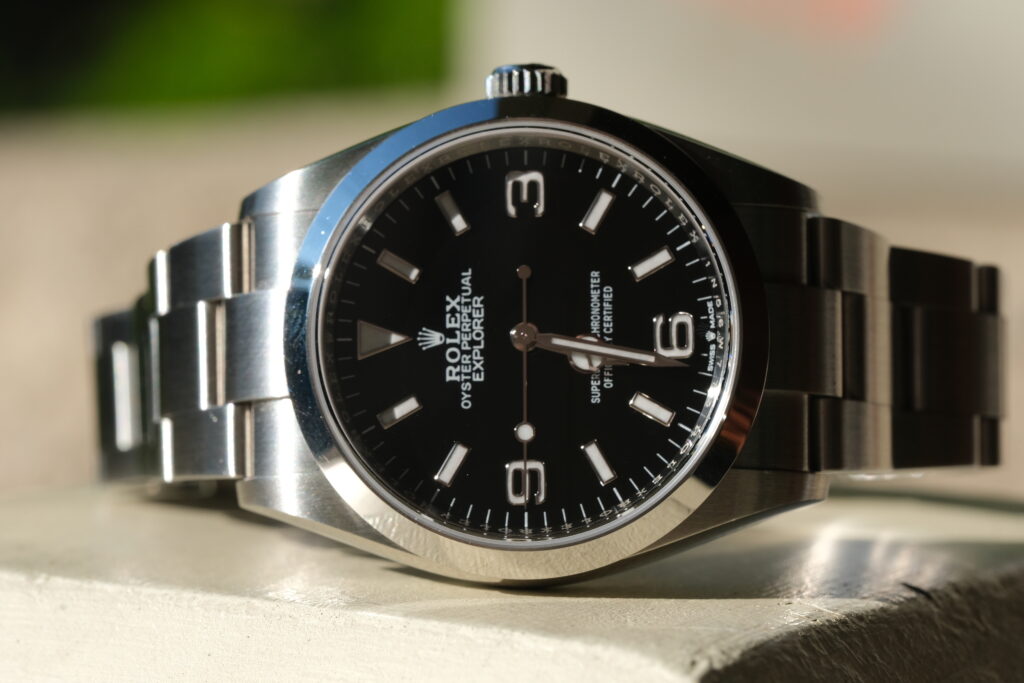
Rolex is often blamed as the most egregious culprit of manufactured scarcity.
Possible Paths Forward
Then how does a company create something new and, more importantly, meaningful? There are three case studies that we will examine to give us an idea of how. First, we’ll look at a relatively young brand which was started in Germany as it reunified. Also, we’ll look at a new brand which took the most direct route and hired an actual designer to spearhead their projects. Then we’ll quickly look at an American company that, like most micro-brands, relies on manufacturing in China, but what sets them apart is how and why they go about their practices.
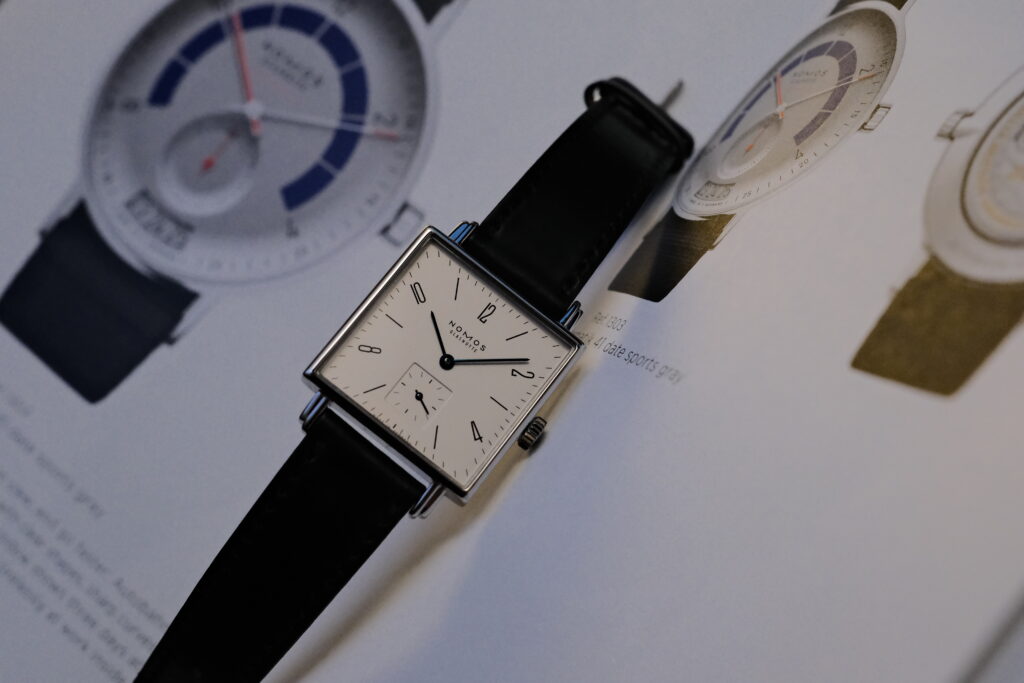
The NOMOS Tetra with the NOMOS Autobahn in the background.
Our first brief case we will look at is a company which started its operations shortly after the fall of the Berlin Wall in Glashütte Germany. Started by Roland Schwertner, an IT professional and photographer, the designs of NOMOS watches had no catalogue to fall back on, but the design school and philosophy of Bauhaus. Though the typeface and numerals used on their Tangente and Tetra models had been used by other brands such as Stowa, their case designs, initial exclusive use of shell cordovan straps, and a plan to gradually scale their business resulted in making truly original designs, and to even eventually making their own movements two decades after opening their doors. Models such as the Metro, Autobahn, Lambda and Lux were aided by the hiring of designers to the eventual opening of their design studio in Berlin, Berlinerblau GmbH.
The Bauhaus design school and philosophy of creating less with more and challenging conventions still to this day has its devout followers. Furthermore, Bauhaus represents a form of nostalgia for the very best that Germany had to offer the world before the unforgivable sin of Naziism. This nostalgia was fuelled by the positive impact of the philosophy and remains a thriving central nervous system to support all of the projects of the brand and many architects and design firms globally.
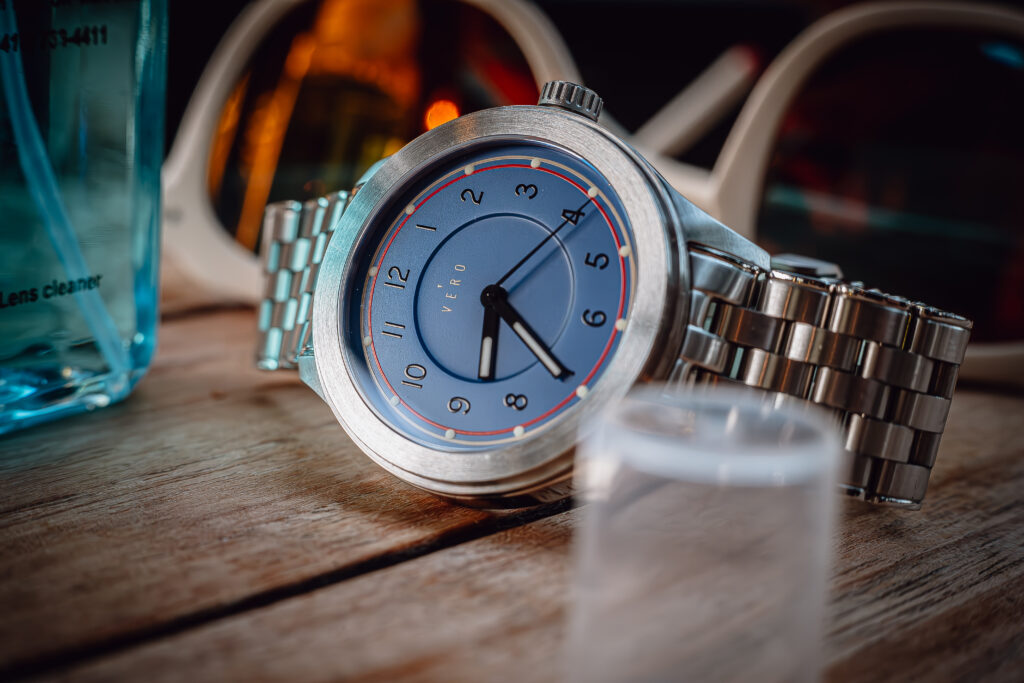
The Vero Meridian
So, relying on a design philosophy, or hiring watch designers, is the surest way to ensure that your timepieces will have staying power. Companies such as Vero hire watch designers, Louis Erard does frequent collaborations with designers to supplement their standard catalogue, and there are companies like Dietrich which are headed by designers themselves. In the case of Dietrich, their SD-1 is possibly one of the most beautiful original dive watches ever designed. All of these approaches give the consumer well thought out products with designs and levels of quality that elevates them past simply being disposable. It should be noted that the main draw towards mechanical watches is that, unlike everything else today, a mechanical watch can be kept for generations if it is maintained properly.
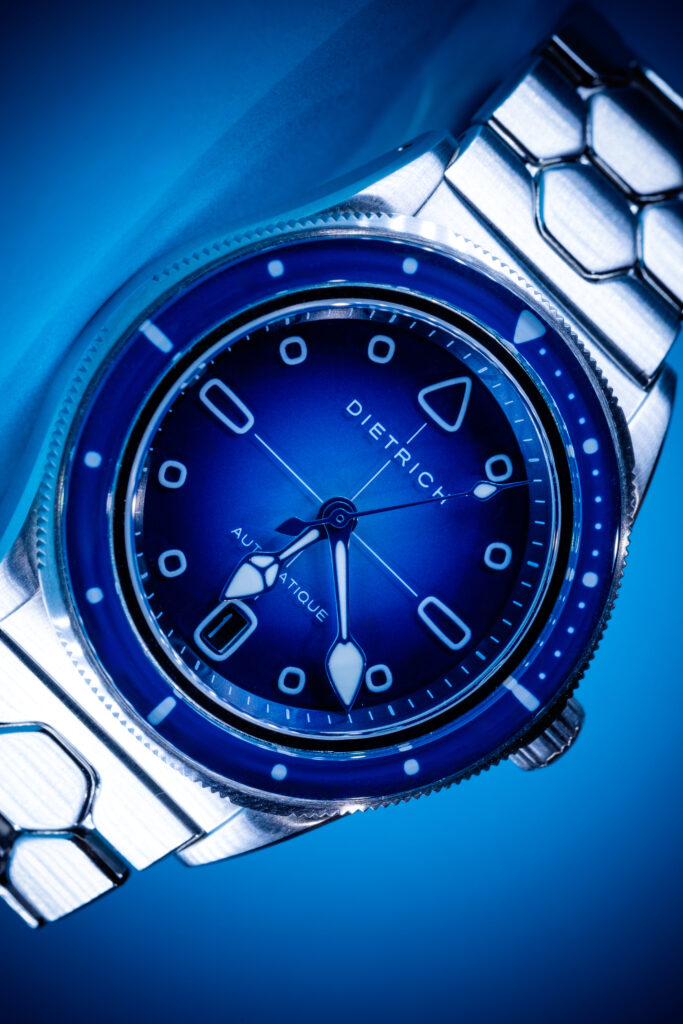
The Dietrich SD-1
A good case of someone starting out a company from scratch without a background in watch design is Hassan Madras of Prevail Watches. You can read my extensive interview with him and the designer he hired here, Matt Smith-Johnson, and the review of their watch here. The result was a totally unique offering which has garnered a cult following. Furthermore, since the watch was designed to be worn during intense activities and to support veterans through the brand’s charitable efforts, the watch had a clear purpose and reason to exist.
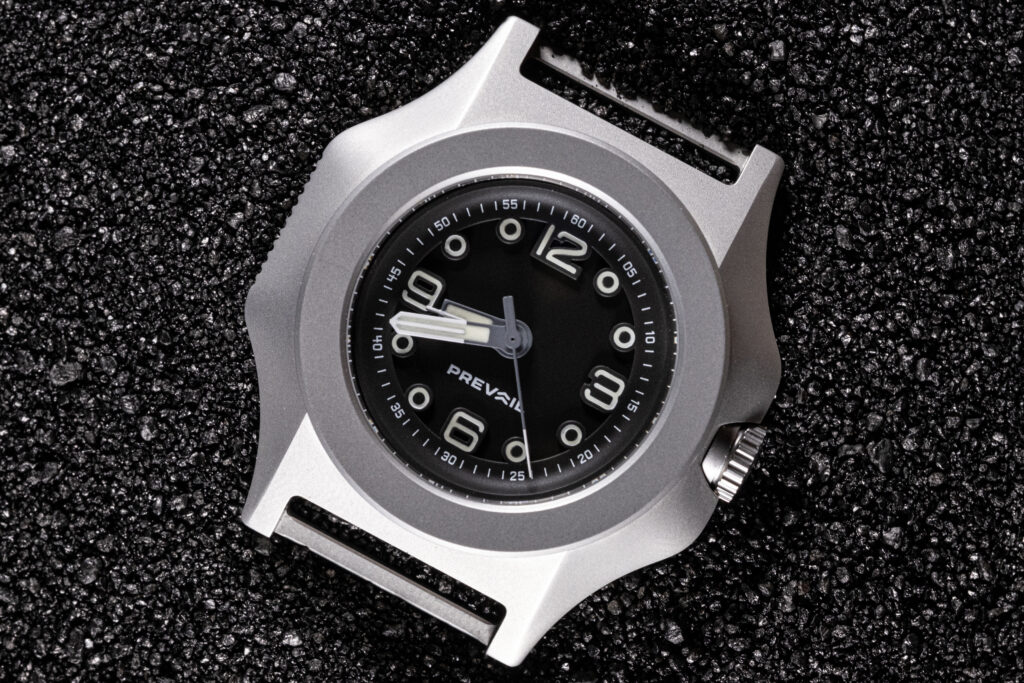
The Prevail Onward
Our last case study focuses on the brand Nodus was started by two young gentlemen in Los Angeles, and like most other brands starting out, they reiterated on designs from industry incumbents. Rather than flat out copying the designs of other watches, they used a tactic found in literature, and used allusions to designs they admired without outright copying them. Just as the Blood Meridian followed cues from Paradise Lost, or how many titles after the release of A Tree Grows in Brooklyn made several references to the great work, Nodus did the same. What resulted was a devout and growing following and a level of respect that allowed for them to work closely with their manufacturers to push the limits of manufacturing. They also started designing their own adjustable bracelet clasps and then shared the design with their partners. Furthermore, they started partaking in mindful collaborations, which tap into what is generally missing from most offerings in the market – a reason to exist in the first place.
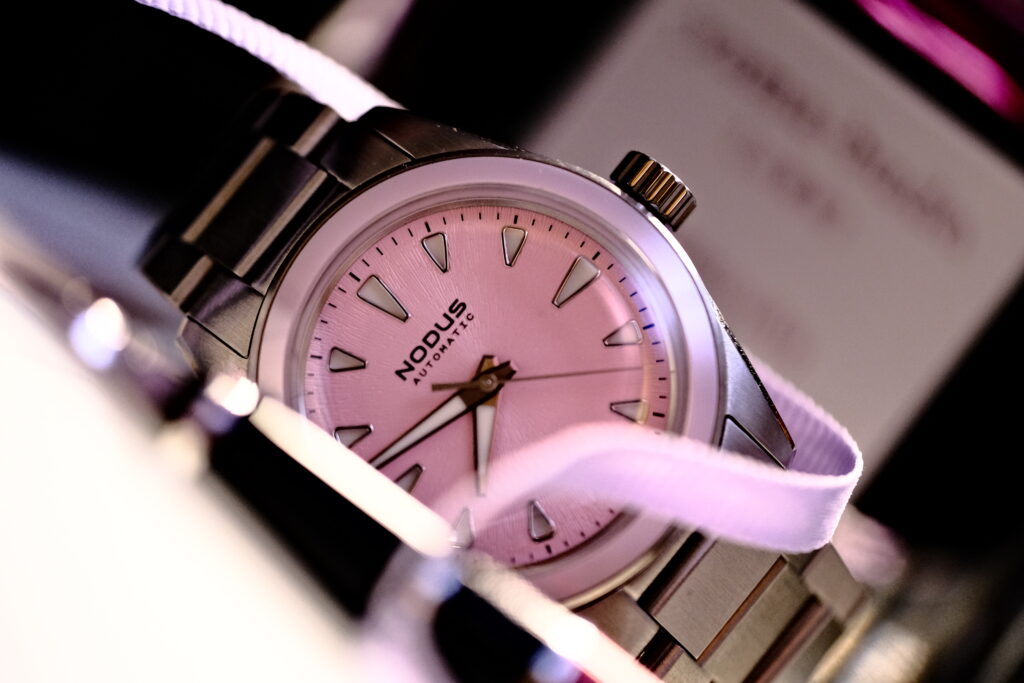
The staggeringly beautiful Nodus Unity, which utilizes multiple design allusions while introducing their own as well as pushing the envelope for what was possible in manufacturing during the time.
All of the models which are frequently being referenced by incumbent companies such as Rolex and Omega share one thing: they all had a specific reason to exist. Models such as the Speedmaster, Explorer, GMT Master and others were all made as tools for specific purposes. Some like the Speedmaster which originally was a “wrist computer” to be used by race car drivers were adopted for other purposes such as by space programs. The novelty of buying a piece of history, or a tool that is simply more than just a piece of jewelry is powerful, and one that many other brands try to fabricate.
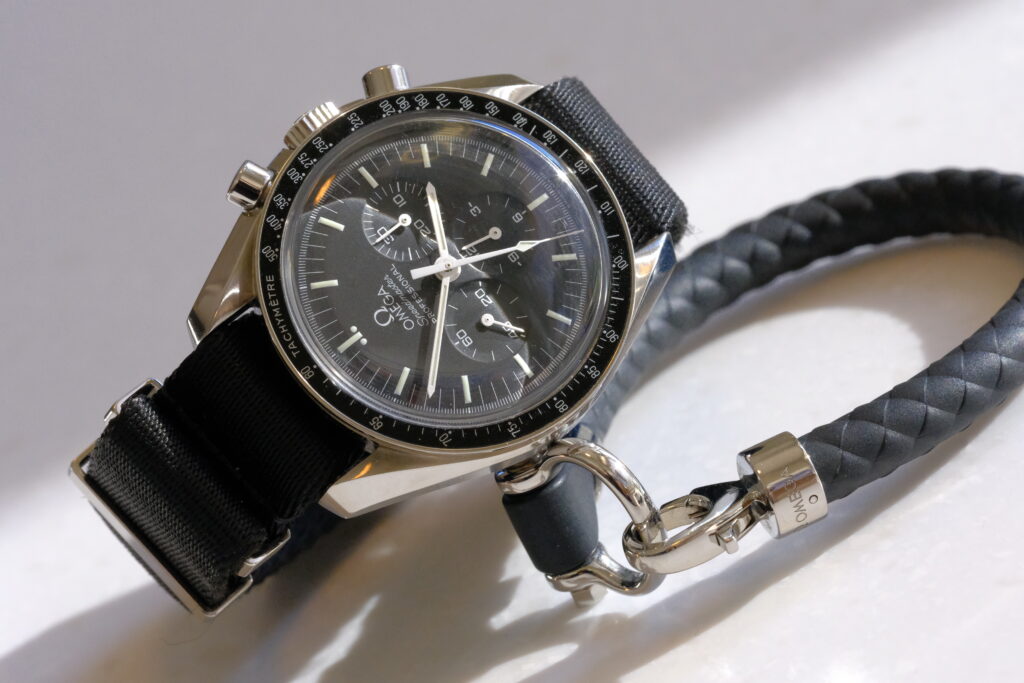
The Omega Speedmaster Professional
The example of the Nodus Sentinel, which was designed in collaboration with the car detailing company AMMO NYC, gives us a window into how to do this properly. While most collaborations extend to putting a logo on a dial along with a unique colour for an existing model, Nodus did a lot more.
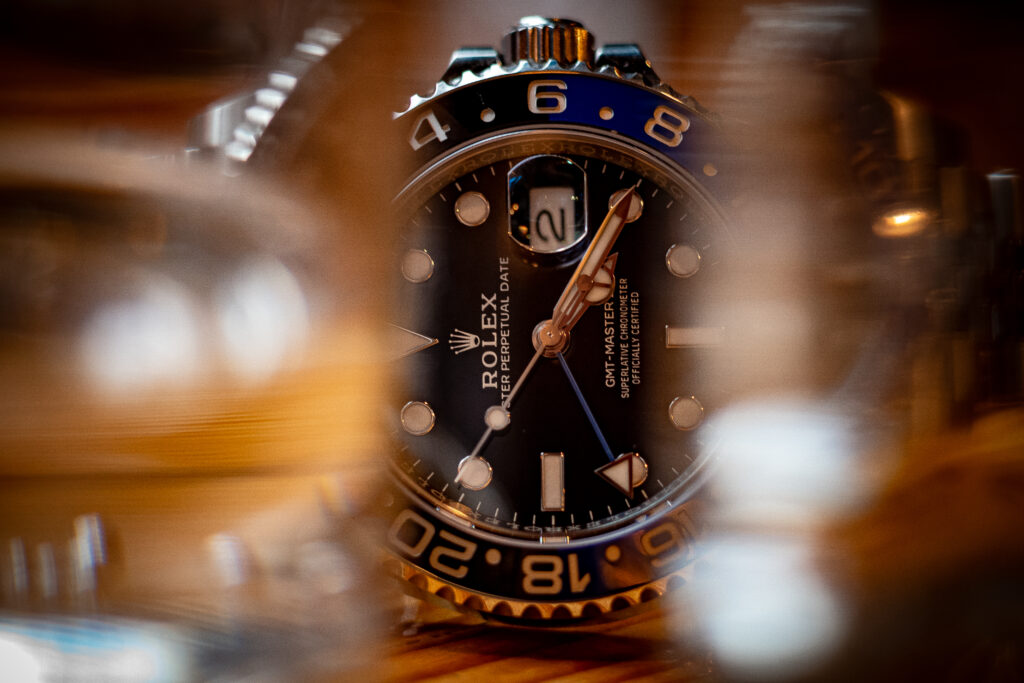
The Rolex GMT Master II,
a tool originaly for pilots.
To accommodate the unique demands in an environment of working with cars and not damaging them, a lot of design choices were made. First, the crystal of the watch is acrylic and not sapphire. Next, the bezel is made of a thermoplastic polyurethane rather than metal or ceramic. Finally, the crown is positioned in the orientation referred to as destro, which places it at the nine o’clock position. This protects the crown itself from gloves, chemicals, but also surfaces that it may bump up against while detailing a vehicle. Such a timepiece and a brand that would bring such a product to the market are far more appealing than most of the new and smaller brands whose products seemingly seem to exist because the brand owners want to partake in the space. The problem is that brands that are mindful about why their products exist and those which don’t occupy the same market space, and common consumers cannot tell the difference until they are already invested in the segment.
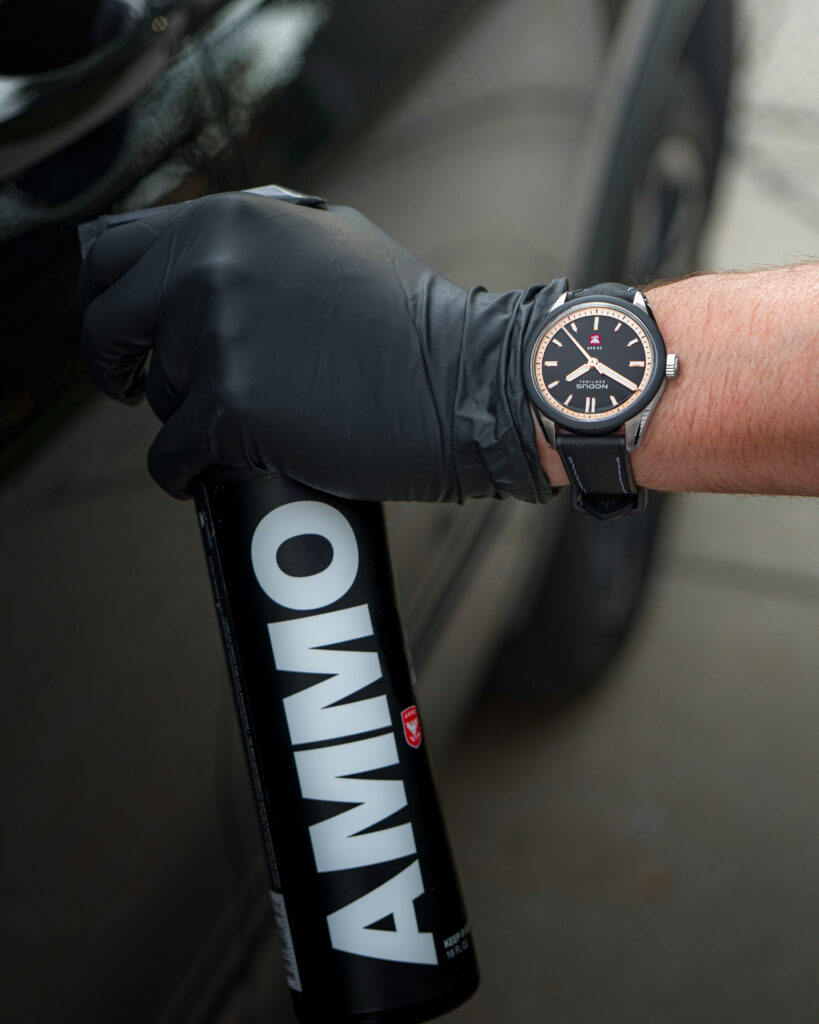
The Nodus Sentinel (photograph provided by Nodus)
There are other companies which we could investigate which had taken alternative routes and have had success. MKII’s Bill Yao’s approach with Japanese manufacturers, and the purchasing of the brand Tornek Rayville to bring his redesigns of the storied brand home, is just one of few examples. At the end of the day, having a genuine reason to exist, and being authentic about the product being brought to market rather than a side gig is imperative for a healthy industry moving forward.

The Tornek Rayville TR600
Closing Thoughts
So, as 2025 comes to a close, I am left with more concerns than hopes for the industry in the sub-ten-thousand-dollar range. Reviewing watches is different than reviewing cars or appliances, which a household is forced to purchase every few years. Outside of professional purposes, such as diving, being a first responder, or being in the military, there is no need for someone to keep buying watches every few years. Thus, the standard of how these products are evaluated is different. Whereas iterations on a car model or refrigerator are acceptable, the same is not the case when it comes to watches. This being where luxury brands in most sectors have been falling out of favour with customers due to a lack of innovation. Stealing designs is not acceptable, no matter which industry it happens in. The excuse used by most brand owners that they are bringing a design to an accessible price point is also not acceptable, for no one needs these products to begin with, and everyone is not entitled to the hard work of others simply because they want it.
Most see the smartwatch as the biggest threat to the industry. I see a lack of innovation and awareness of the overall contributions from all brands as the biggest risk. As I witnessed many consumers look on with bright eyes at various trade shows, a lot of those eyes dulled by the end and they could not name more than three brands and their corresponding models.
With the stated global challenges above, there will no doubt be a market correction that will leave several brand owners with much lighter bank accounts, and thousands of drawers filled with dead timepieces in the near future.
As someone who loves this industry and its people, this fills me with a great sadness. One can only hope that the market correction is a positive one in which this sub-one-thousand-dollar sector grows and doesn’t implode. Thereby erasing hundreds of brands and eradicating consumer confidence in this specific market within the industry, as it has for luxury goods on the whole.
Time of writing: November 21st, 2025
